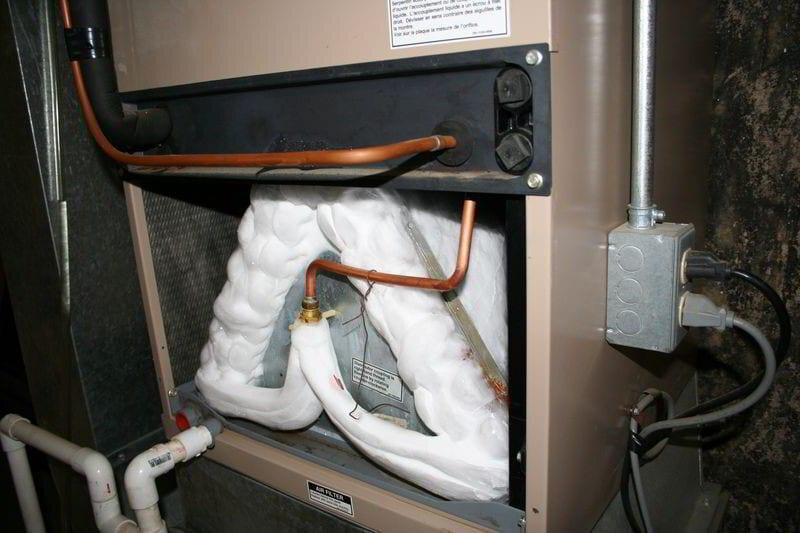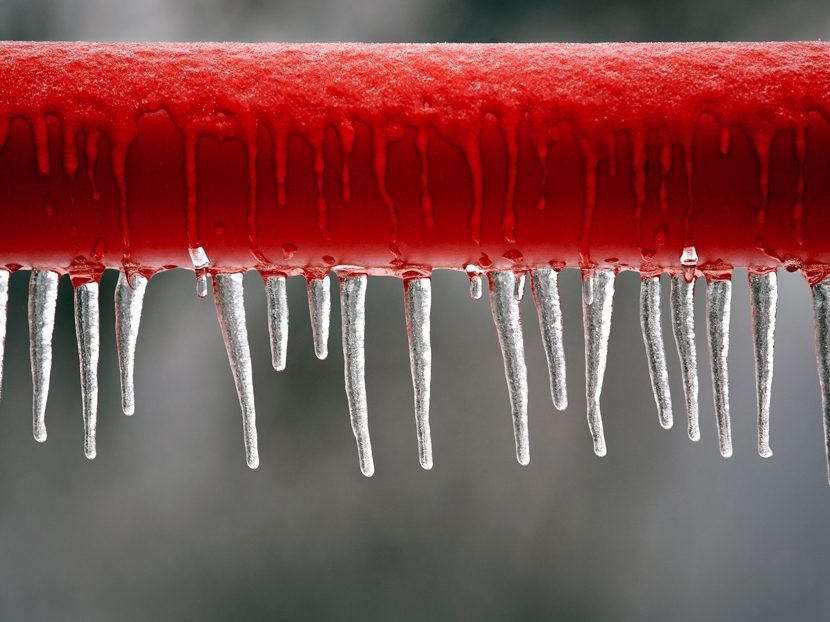We have discovered this article on What Do I Do If My AC Pipe Is Frozen listed below on the internet and reckoned it made perfect sense to write about it with you on this site.

Intro
Finding that your AC pipe is frozen can be worrying, especially during warm summertime when you count on your a/c one of the most. Understanding what to do in such a circumstance is vital to stop further damages to your air conditioning system and guarantee your comfort indoors.
Understanding the Causes
Several aspects can add to the freezing of an air conditioner pipe. Comprehending these causes can help you resolve the problem effectively.
Absence of Airflow
One typical cause of an icy air conditioning pipeline is inadequate air flow. When the airflow over the evaporator coil is limited, it can cause the coil to drop below freezing temperature level, leading to ice formation on the pipeline.
Low Refrigerant Levels
Inadequate cooling agent levels in your a/c system can likewise cause a frozen pipe. Reduced cooling agent degrees can cause the pressure in the system to go down, bring about the cold of wetness on the evaporator coil.
Winter Conditions
In cooler environments, freezing temperatures outside can contribute to the freezing of air conditioning pipes. If your air conditioning system is not appropriately protected or if there are leaks in the ductwork, chilly air can penetrate the system, creating the pipeline to freeze.
Dirty Air Filters
Dirty or blocked air filters can restrict air movement in your air conditioner system, bring about various issues, consisting of an icy pipeline. It's essential to change or clean your air filters on a regular basis to make sure appropriate air flow and protect against ice buildup.
Signs of a Frozen AC Pipe
Identifying the signs of an icy air conditioning pipeline is vital for timely action.
Reduced Airflow
If you see a considerable decline in air flow from your vents, it can suggest an icy pipe.
Ice Buildup on the Pipe
Noticeable ice buildup on the refrigerant line or the evaporator coil is a clear sign of a frozen air conditioner pipe.
Odd Sounds from the Unit
Uncommon sounds, such as hissing or gurgling, originating from your air conditioning system can signify that there's ice existing on the pipe.
Immediate Actions to Take
When faced with a frozen a/c pipeline, it's essential to act rapidly to avoid more damages to your air conditioning system.
Shutting off the air conditioner
The first step is to turn off your air conditioning unit to prevent the system from running and intensifying the issue.
Checking for Blockages
Inspect the location around the indoor system for any type of obstructions that may be obstructing airflow, such as furniture or drapes.
Defrosting the Pipe
You can make use of mild techniques like placing towels taken in warm water around the frozen pipeline to assist thaw it gradually.
Preventive Measures
Taking preventive measures can help stay clear of future occurrences of an icy air conditioner pipe.
When DIY Methods Fail
If your attempts to thaw the pipeline or address various other issues are unsuccessful, it's time to employ a specialist.
Relevance of Hiring a Professional HVAC Technician
A licensed HVAC service technician has the knowledge and devices required to identify and fix problems with your AC system safely and effectively.
Regular Maintenance Checks
Schedule regular upkeep checks with a professional HVAC professional to make sure that your air conditioning system is running efficiently.
Transforming Air Filters
Frequently replace or clean your air filters to stop airflow limitations and preserve optimum efficiency.
Shielding Exposed Pipes
If your a/c pipelines are subjected to cool temperature levels, consider insulating them to avoid cold during winter season.
Looking For Professional Help
If DIY approaches stop working to fix the concern or if you're uncertain regarding just how to continue, it's ideal to seek aid from a qualified HVAC professional.
Conclusion
Taking care of an icy AC pipe can be a discouraging experience, yet knowing how to respond can aid minimize damages and recover convenience to your home. By recognizing the reasons, acknowledging the indications, and taking punctual activity, you can successfully attend to the issue and prevent future events.
What to Do If Your AC Line Is Frozen
Make Sure All Supply and Return Air Vents Are Open
If you notice problems with airflow, the first thing you should do is check your supply and return vents. Supply vents distribute clean, conditioned air throughout your home. As this air becomes stale, it’s pulled into the return vent, where it’s reconditioned before being sent back out through the supply vent.
When these vents are closed, air won’t flow in the home. Before examining your AC, check the vents in every room and ensure they’re all open.
Check for a Dirty Air Filter
Another possible cause of limited airflow is a dirty air filter. Your air conditioner’s filters catch elements you don’t want to breathe in, such as dirt and dust. Over time, filters can become clogged, ultimately blocking air from flowing in and out. The lack of airflow can then cause the entire coil to freeze and will completely restrict any air from moving through it. The AC may need to be powered off for one to two days to allow the coil to thaw after replacing the filter to allow proper functioning of the unit. This debris can also accumulate on your AC’s evaporator coil, requiring a more serious repair. In general, air filters should be cleaned regularly (about every two weeks).
Assess Your Outdoor Unit
In addition to checking your AC, assessing the outdoor unit is a good idea. Also known as the condensing unit, it works with your interior unit to release heat outside. An issue with the outdoor unit can result in rising internal temperatures.
Overgrown Shrubs or Clogged Leaves
From leaves and twigs to shrubs and debris, there’s no shortage of outdoor elements that can accumulate around your condensing unit. When these elements get lodged inside the unit, they can block airflow. Fortunately, removing the blockage can solve the problem.
Sounds of a Broken Fan
Shrubs and leaves aren’t the only things that can impede your outdoor unit’s airflow. If the fan is broken, the unit won’t be able to properly get rid of heat — which means the internal temperature won’t go down. First, make sure the fan is spinning. If it is, check for the following sounds of a broken fan:
- Buzzing
- Rattling
- Screeching
- Hissing
- Clicking
Preventative Measures
Nobody wants to deal with a frozen AC line. In addition to causing problems with your air conditioner, they require professional repairs. On the bright side, there are preventative measures you can take to help ensure this issue doesn’t arise in the first place.
https://www.coopergreenteam.com/blog/what-to-do-if-ac-line-frozen

I ran across that blog entry on Why Is Ice On My Outside Air Conditione while browsing the internet. Loved our write up? Please share it. Let other people check it out. Thanks so much for taking the time to read it.
Book Inspection
Comments on “Dealing With a Frozen AC Pipe - Guidance for Addressing the Issue”